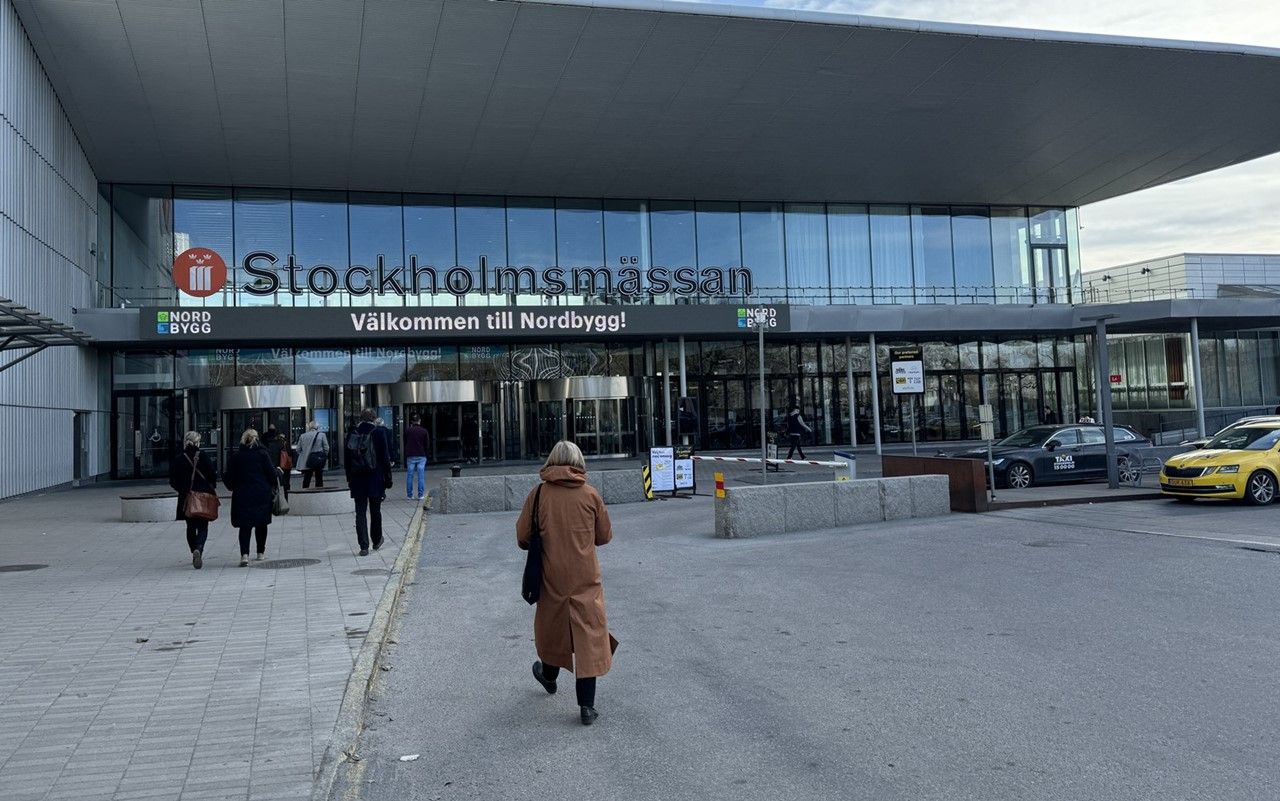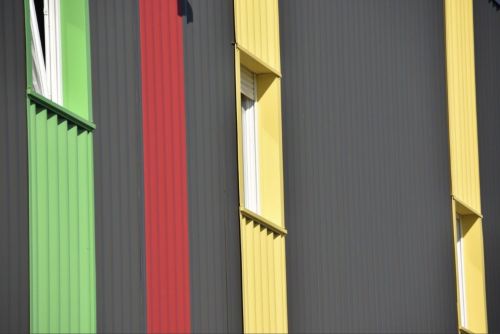Warehouses for the workers
Warehouse & industrial
In 2020, LPP will start the construction of a new distribution centre in Brześć Kujawski (almost halfway between Bydgoszcz and Łódź). The centre, which should be ready by 2022, will also be the first warehouse in Poland to hold an International Well certificate provided by the International Well Building Institute. This takes into account factors such as the quality of the ventilation, the lighting, the water and even of the meals that are served. Well has mainly been used for office buildings so far, but now it has also been awarded to a Polish warehouse building. The DC5 building in the Prologis Park Tilburg complex in the Netherlands has already been granted a Well certificate with a ‘Gold’ rating. It features green walls and balustrades lined with plants. The warehouse has also been fitted with biodynamic lighting, air quality monitoring sensors and drinking water taps. Low carbon emission finishing materials have also been used. According to Paweł Sapek, a senior vice-president and country manager of Prologis in Poland, logistics parks are becoming a feature of employer brand building for many companies and a battle- ground for retaining personnel. “Developers today are having a real impact on shaping the work environment, helping employers seem more attractive and helping to recruit and keep valuable employees,” argues Paweł Sapek.
According to him, in this context, the future belongs to warehouses built according to Well standards. “The Well system is performance-based and is used to measure, certify and monitor the aspects that affect people’s health and well-being. These are factors such as the air, the water, the nutrition, the light, the building’s physical condition and its comfort of use. The key thing is that investing in Well-certified buildings is profitable. They have a better indoor climate and a large amount of natural light, which results in fewer absences from work, greater efficiency and better health,” claims Paweł Sapek.
Paweł Sapek, a senior vice-president and country manager of Prologis in Poland
A gym and bar under one roof
Prologis’ own data shows that around 3.3 mln people are currently employed in warehouses across the EU. The average is 100 people per 10,000 sqm of workspace in such buildings, while e-fulfilment centres employ ten times more employees than traditional warehouses. Furthermore, the number of employees in the warehouse sector has been growing steadily, so it’s not surprising that the quality of the working environment in this market segment has become increasingly important. “Providing warehouse workers with, for example, excellent transport links in order to minimise their travel time is becoming the standard. We have made not only the creation of cycle paths and bus lanes a priority, but also the development and use of mobile car-sharing apps to encourage employees to make fewer car journeys. Successful pilot projects involving such services have already been introduced in the UK and Hungary,” reveals Paweł Sapek.
In his opinion, access to a selection of food is also important, which is why some logistics parks now contain bars, restaurants and food trucks that serve meals in the lunch breaks. These have been gaining popularity in many countries, especially in Germany and the Netherlands. Internal and external common and recreational areas are also becoming increasingly necessary. “There are plenty of examples. Some parks in Hungary offer barbecue sites and some in Sweden have saunas and bowling alleys, while coffee bars are very popular in Italy. Areas for playing sports, such as football and basketball, are popular in the Netherlands, Hungary and Slovakia. There are also outdoor gyms,” adds Paweł Sapek.
Prologis Park Tilburg in the Netherlands has been filled with of greenery. It features green walls and balustrades lined with plants
The way to a man’s heart is through his stomach
MLP is another developer that aims to have a friendly working environment in all its warehouses. “We strive to listen to the needs of our clients on an ongoing basis and provide them with interesting features and amenities,” insists Agnieszka Góźdź, the head of leasing at MLP. “Furthermore, we build office space outside the warehouses, so that it is not located in the corners of the warehouses themselves but in a separate building with access to daylight from three sides. Maximum lighting is also obtained through the use of glazing inside the offices,” she adds.
Another convenience that the company is now adding to its facilities are canteens, which are popular with the employees and customers of the parks. “We started introducing this idea from our distribution centre in Pruszków, and because it was given the thumbs up by the tenants there, we are now introducing it in our other parks,” explains Agnieszka Góźdź.
In her opinion, green areas now play a crucial role, not only for relaxation purposes but also for improving the appearance of the buildings. “We try to make greenery a vital element of our complexes, so they are never lacking in space for plants and recreation. We designed and built an almost 200m long terrace on the roof of the office of one of our clients. We also make sure that the employees of our buildings have access to bicycle rental while those who prefer public transport can use the bus stops situated in front of our facilities. Since our locations are on main roads and close to the city, a significant number of employees still use passenger cars despite the excellent public transport links. In the near future we will be installing electric car charging points in our facilities. We understand that our clients are trying to create more friendly working conditions to keep their employees on for longer, which is why we are helping them as best as we can,” insists Agnieszka Góźdź.
“We try to make greenery an important element of our complexes, so they are never lacking in space for plants and recreation,” insists Agnieszka Góźdź, the head of leasing at MLP
Ecology and savings
Warehouse developers are also increasingly paying closer attention to environmental standards and sustainable development. One of the greenest facilities to have been built recently is one developed by Goodman in its Goodman Mladá Boleslav Logistics Centre, about halfway between Prague and the Polish border. Clarios, one of the largest car battery manufacturers in the world, has recently moved into the building, which is the first warehouse of its kind in the Czech Republic to have been awarded the LEED v4 environmental certificate. The 22,100 sqm warehouse with 1,300 sqm of offices was designed according to Clarios’ requirements to have enhanced security and stringent sustainable development features. It also has intelligent energy simulation, which enables the building’s energy costs to be 36.5 pct lower than other similar buildings. This has been made possible through the use of energy-efficient LED lighting in combination with motion detectors and daylight monitoring. If the intensity of the natural light is adequate, the artificial lighting is automatically dimmed. Meanwhile, the ventilation system in the building has been designed to recover heat from the air. In addition to that, the drinking water consumption has been reduced by 50 pct. Waterless urinals and toilets with two-stage flushing have also been installed, which reduces the amount of flush water by around 58 pct. Stored rainwater is also used for flushing, which covers 100 pct of the demand for such water in the building even during periods of average rainfall. The water use in the bathroom, kitchen and the showers has also been reduced. Rainwater is also used to water the plants around the building, which are mainly local plant varieties and grass mixtures with low watering requirements.
“Due to the labour market today, employers expect developers to ‘domesticate’ not only the office space but also the social space in warehouses,” believes Waldemar Witczak, a regional director at Segro
Employee market and new challenges
Panattoni is another that has made sustainability a priority. For instance, the developer has built a BTS building for H&M in Grodzisk Mazowiecki, southwest of Warsaw. It has been LEED certified with a ‘Silver’ rating. The sustainability of the project has been ensured by its modern design, the environmentally-friendly materials used, its energy saving systems and its convenient location. This is the second facility built for this client by the developer. The previous one was developed in Panattoni Park Poznań I in Gądki and was the first in Panattoni Europe’s portfolio to feature such environmental systems.
According to Waldemar Witczak, Segro’s regional director, the location, the quality of a property and the amenities it offers are becoming much more important for warehouse workers. Meanwhile, the businesses that operate from them are increasingly using these features as a natural part of their employer brand building activities aimed at retaining their staff. They also recognise that a well-motivated employee is a valuable resource for any company. “Due to the labour market today, employers expect developers to ‘domesticate’ not only the office space but also the social space in warehouses. This has meant the introduction of spacious changing rooms with modern sanitary facilities, large canteens with a selection of dishes on the buffet, modern conference rooms and rest areas. One of our recent projects involved the replacement of the filters in the ventilation systems with higher filtration alternatives. This resulted in more effective air purification. As air pollution and smog become more pressing issues, these kinds of changes, while designed to give the buildings a superior standard, are still absolutely necessary and result from the concern for the comfort of work of our clients and their employees,” insists Waldemar Witczak.
In his opinion, the direction that warehouse developers are set to follow will be determined by the changing needs of employers and the growing requirements of employees. “We have not ruled out that in the next few years our clients will expect projects that might seem futuristic right now. However, if such a scenario comes to pass, we will be flexible and respond to such requirements,” promises Waldemar Witczak.























































